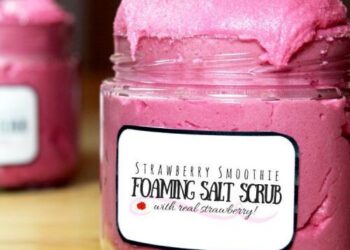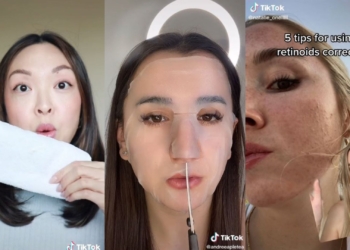
Oil cleansing has certainly taken over the world by storm and for many people who’ve tried it, it has become their secret to happy, radiant skin. Believe it or not, oil actually help to dissolve oil, dirt and draws out impurities from the skin. For the reason that you’re not stripping your skin of its natural oils by washing it with regular cleansers or soap, your skin finds its balance and in time, would produce less oil, leaving your pores relaxed and clog-free. However, this method doesn’t work on everyone, so it’s best to try it out for a week or so to observe how your skin adjusts and reacts to it.
If you’re ready to give the oil cleansing method a try, let us explain how it works:
First, rinse a washcloth with warm water and place it over your face for a minute. Then, get a generous nickel-sized amount of the oil blend and rub it in between your palms to warm it up slightly. Gently massage it all over your face in circular motions to remove makeup and cleanse the skin. After that, soak your washcloth with hot water, making sure it isn’t scalding hot, wring it out and place it over your face to steam it so that your pores will absorb the nutrients from the oil. You can repeat this once or twice for a deeper cleanse. With that same washcloth, wipe the excess oil off your face. It’s very normal to have a very thin film of oil left on your skin. Finally, using a cold washcloth, wipe your face to ensure that your skin locks in the nutrients.

These oil cleansers mainly consist of carrier oils, cleansing oils and essential oils. The cleansing oils are naturally astringent and draw impurities out from the skin, and the carrier oils help to balance out the skin’s natural oil production and moisturise the skin. Depending on what your skin needs, most people usually add one to two drops of essential oils for that extra nourishment of the skin. Some examples of cleansing oils include castor oil and hazelnut oil. For carrier oils, people tend to use grapeseed oil, jojoba oil and extra virgin olive oil. Some essential oils include tea tree oil, chamomile oil, sweet almond oil and lavender oil.
You can always purchase ready made organic oil blends from stores, but they usually cost a bomb, especially if they are bottled by hand. Hence, many have resorted to creating their own oil blends to suit their own skin type and skin conditions. This way, you would be able to save a lot of cash and tweak your own oil blend according to your preference until you’ve discovered what works best on your skin.

Here, we have three recipes meant for different skin types for you to try out:
1. For combination or acne-prone skin:
1 part organic sweet almond oil
2 parts argan oil
2 parts rosehip oil
A few drops of tea tree oil
2. For dry skin:
1/3 parts castor oil
2/3 parts avocado oil
A few drops of chamomile oil
3. For normal skin:
1/2 parts castor oil
1/2 parts extra virgin olive oil
A few drops of jojoba oil









